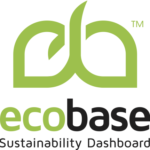If you own or manage a tourism business, chances are you’ve seen a profound transition within the industry over the past decade. Not only is the cost of doing business constantly rising, but the dramatic weather and climate changes are having a big impact on business. Plus, the heightened environmental awareness of tourists is impacting their travel decisions.
GreenStep Solutions conducted to find out what travellers think about when they decide to book accommodation, activities or experiences in BC. According to the preliminary results, there was overwhelming support (76% of the 765 tourists surveyed) for making travel decisions based on a company’s green programs, logo or certification.
So to make sure you are keeping up with the trends of the industry, here are 5 things every green tourism business needs:
1. A commitment to sustainability.
Some might think, “Yes I’m committed. I don’t want to do anything that damages the environment.” But how is this commitment shown in a formal way? Here are some questions to ask yourself to make sure your company is in fact committed to operating sustainably.
a. Are you certain you are complying with all relevant environmental legislation? (Do you know what that legislation is and where to find it?)
b. Are you continuing to improve your environmental performance by looking for ways to operate more efficiently and ethically?
c. How are you communicating what you are already doing for the environment? Is there any chance you greenwashing? It may not be intentional, but being honest and transparent is by far a better way to do business. Here’s a recent example of greenwashing: saying you are one of the greenest auto companies only to have the public find out you’ve been using rigged software to cheat on your U.S emissions testing over the past decade… Volkswagen!)
d. And finally, do you have at least one person who is responsible for green related activities in your company (i.e. a sustainability coordinator)?
2. You’re meeting minimum standards and managing risk.
The public has a heightened awareness of what is green tourism and what is not, so watching a company spray toxic chemicals on plants or noticing contaminated water sources will get pointed out by your visitors. So as a company, make sure you are complying with all relevant legal requirements and standards, and that you’re taking steps to minimize risk. This includes minimizing the risk of oil or chemical spills, health hazards and employee safety, avoiding noise pollution, odours and litter and ensuring all grease, oil and fats are contained and disposed of properly. You’re probably doing everything right, but it’s worth a double check.
3. Evidence that you are measuring monitoring key sustainability indicators
 What does it take to operate your business? You may be looking over your energy bills to enquire about strange spikes in usage, or to see if your new boiler is in fact using less energy like it said it would. But are you putting your energy consumption into a spreadsheet or a software to see if there are trends in usage? Have you talked to your electricity or natural gas account manager to see if there are opportunities to reduce your energy even further? Doing so could save you money and lessen your carbon footprint (and carbon taxes)!
What does it take to operate your business? You may be looking over your energy bills to enquire about strange spikes in usage, or to see if your new boiler is in fact using less energy like it said it would. But are you putting your energy consumption into a spreadsheet or a software to see if there are trends in usage? Have you talked to your electricity or natural gas account manager to see if there are opportunities to reduce your energy even further? Doing so could save you money and lessen your carbon footprint (and carbon taxes)!
Remember your operational performance includes more than just energy. Tracking waste, paper, water and vehicle fuel are all a good idea. You can measure all these numbers against gross revenue, occupancy or number of visitors to understand your impact and carbon footprint per guest or dollar earned. To get truly sustainable, think about monitoring things like employee and customer satisfaction, wildlife species, and more as applicable and relevant to your business.
4. A company green and sustainability policy.
Do you have something in writing that shows your company’s policy on environmental, economic, cultural and social issues? Maybe you have an “unwritten” policy that most of you know about and follow based on the owner’s personal values, but it hasn’t yet been formalized. Once you have created your green policy, make sure it is on display for staff and guests to see and understand. And make sure you honour it by enforcing it when you see something that goes against your policy.
5. A green/sustainable management file.
This is simply a file (electronic or physical) that all efficiency, environmental, or community related documents are stored. Obviously the style of filing needs to fit your business management system. Include documents such as green activities or initiatives you’re working on as well as new ideas and opportunities. Include evidence such as receipts and invoices for lighting or new refrigerators, green team meeting minutes, staff beach clean up photos or even napkins with great green ideas scribbled on them. Just make sure it’s in a convenient place to help you stay organized and to make sure what you’re doing aligns with your green action plan… if you have one.
We see these 5 things as essential to starting your journey as a sustainable tourism business. You don’t have to be doing absolutely everything already; you just need to create the foundation to move ahead with the right foot forward. There is a lot of help and advise out there, don’t be afraid to ask.

